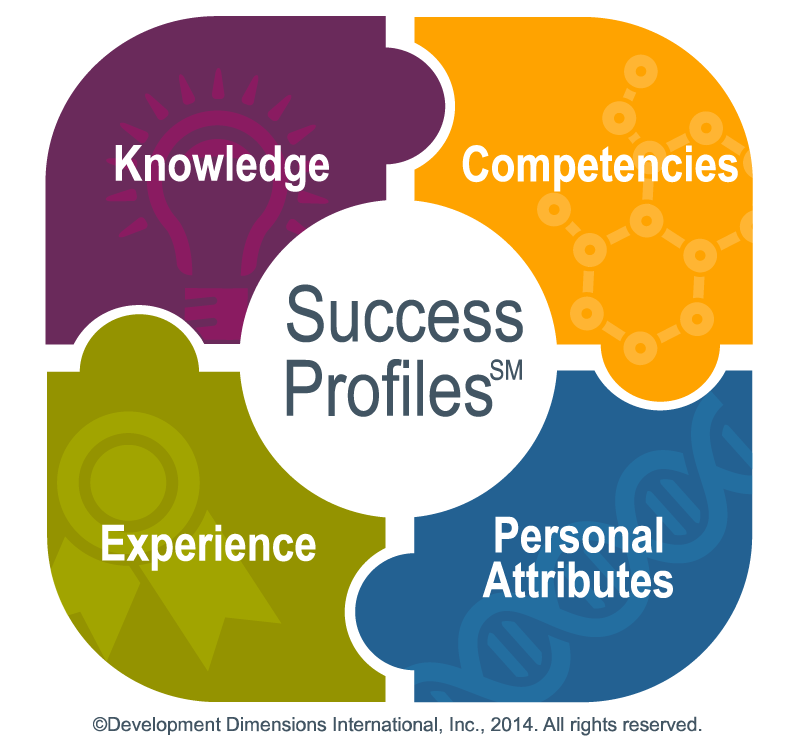In organizations across industries and around the world, leaders face a common challenge: retaining top talent. Understanding the reasons why team members leave is crucial for reducing employee turnover. In this blog, I’ll discuss why good employees leave, what leaders can do about it, and how you can build strong leaders in your business.
Retaining Good Employees Is Possible During High Turnover Times
As part of our research for the Global Leadership Forecast (GLF), we asked HR executives about the turnover their organizations experienced. During 2022, 54% of companies faced increasing turnover, which was consistent with high rates of turnover the previous year.
While some turnover is inevitable and healthy, organizations need to focus on retaining good employees. These employees are usually competent key contributors to their team. They may also have leadership potential for the future, making them especially valuable. But what makes a good employee?

Of HR executives surveyed about turnover in their organizations during 2022, 54% of companies faced increasing turnover, which was consistent with high rates the previous year.
DDI Global Leadership Forecast, 2023

Characteristics of Good Employees
Organizations need more than a subjective reason, like “they are a hard worker,” to determine whether a team member is a good employee. One approach is to measure employees against what DDI calls a Success ProfileSM for their position. The Success Profile covers four factors that contribute to effective performance:
- Knowledge: what they know
- Experience: what they have done
- Competencies: how they behave
- Personal Attributes: dispositions, qualities, and traits that contribute to success in a job
To identify an employee with high potential, you should also evaluate their performance over time as well as their readiness and willingness to take on new responsibilities.
A Google search for the top characteristics of an awesome employee yields over 99 million results. And most of the traits are to be expected. Indeed.com lists 10 qualities that are a good short list: dedication, confidence, reliability, teamwork, independence, leadership, interpersonal/communication skills, self-awareness, critical thinking, and integrity.
Another important factor to consider is whether the employee is also a valuable team member. Forbes lists the 10 characteristics of a real team player in any situation. This includes traits like understanding the team’s goals, being honest, and encouraging teammates.
Why Good Employees Leave – Reason #1: Burnout
A major reason why good employees leave is that they are burned out. Contributing to their leaving according to DDI’s Global Leadership Forecast report is that leaders don’t have the skills to help. In 2022, only 15% of leaders reported feeling prepared to prevent employee burnout on their teams. To make matters worse, and probably related, 72% of leaders themselves reported that they too felt "used up" at the end of every work day. This is an increase from 60% in 2020.
Our research also showed that younger leaders are most at risk of burnout. Seventy percent of leaders under age 35 report feeling used up at the end of every day, with rates even higher among women and minorities.
So what can managers do to prevent their team members from burning out? Managers can practice four key behaviors to help address burnout:
- Genuinely acknowledge failures and shortcomings.
- Show a willingness to be vulnerable.
- Ask about wellbeing.
- Listen and respond with empathy.

Our research shows 70% of leaders under the age of 35 report feeling used up at the end of every day, with rates even higher among women and minorities.
DDI Global Leadership Forecast, 2023
Why Good Employees Leave – Reason #2: Manager Behavior
As the common adage goes, people don’t leave organizations, they leave leaders. DDI’s Frontline Leader Project showed that 57% of employees have left at least one job because of a bad boss.
According to articles from Harvard Business Review and Forbes, some of the manager behaviors that can cause good employees to leave are:
- Insufficient Feedback: Managers who don’t ask for feedback on how they are doing and who don’t provide feedback on their employees’ strengths and growth areas send a powerful message to their teams: that they aren’t worth recognition or constructive advice to improve. Lack of feedback makes employees feel underappreciated and undervalued.
- Poor Delegation: When leaders micromanage their team members, they give the impression that they don't trust their team. Without the opportunity to take on tasks and projects from start to finish, some employees may leave to find a role where they feel empowered with more ownership of their work.
- Poor Prioritization: Managers who lack prioritization skills can set their team up for failure because team members lack focus and alignment with goals. It is crucial that employees know what is most important to do first and the time frame to do it. Additionally, managers without prioritization skills can cause their teams to waste time and work without the proper resources.
- Conflict Avoidance: Conflict avoidance in a leader can allow problems to increase and can make employees feel discontent and dissatisfied. Ignoring conflicts hampers productivity and damages morale. This could prompt employees to seek workplaces where their concerns are acknowledged and resolved. Ineffective conflict management also erodes trust in leadership, compelling skilled workers to pursue jobs where their voices are valued.
Why Good Employees Leave – Reason #3: Lack of Inclusion
In a workplace marred by a lack of inclusion, unconscious bias, and other diversity, equity, and inclusion (DEI) issues, employees often feel alienated and disengaged. This toxic environment can decrease productivity and erode employee morale and engagement. When team members feel marginalized or treated unfairly, their motivation to excel and contribute dwindles. A pervasive atmosphere of exclusion can leave employees feeling undervalued and unheard, ultimately driving them to seek opportunities elsewhere.
Our research bears this out and finds this to be true. We found that at every level of leadership, women and minorities are significantly more likely to say they need to leave their job in order to advance.
Leaders play a crucial role in shaping a company’s culture of inclusion. When team leaders fail to champion diversity and equity, or worse, perpetuate discrimination, bias, or favoritism, the ripple effects are profound. Employees rightly look to their leaders for guidance, inspiration, and opportunity. When leaders don’t prioritize inclusivity or turn a blind eye to discrimination, it sends a clear message that such behaviors are tolerated or even condoned. Consequently, trust in leadership goes down and employees become disillusioned with the company's values and mission.
Maintaining a healthy culture of inclusion requires leaders who proactively acknowledge the importance of diversity but also actively promote an environment where every employee feels valued, respected, and empowered to contribute their unique perspectives and talents. By fostering a culture of belonging, leaders build unity and cohesion among teams, reducing turnover rates and boosting company performance.
Why Good Employees Leave – Reason #4: Inflexible Work
In today's dynamic work landscape, retaining talented employees goes beyond competitive compensation. Gallup shows that it takes more than a 20% pay raise to lure employees away from a manager who engages them—and almost nothing to poach disengaged workers. While financial rewards are definitely important, there has been a significant shift in what employees seek from their workplaces, with a notable emphasis on supportive leaders, a positive company culture, and flexible schedules.
Leaders play a pivotal role in fostering a supportive, flexible work environment that resonates with employees. They set the tone by prioritizing employee wellbeing and creating and implementing policies and procedures that promote work-life balance. By offering flexible work arrangements such as remote work options or flexible hours, leaders demonstrate their commitment to accommodating the diverse needs of their workforce.
According to our research, CEOs who support flexible work reported that they were more prepared to engage and retain talent than those who do not support flexible work. They are also 2.6X more likely to feel prepared to hire the right people.
By focusing on creating a supportive and flexible workplace, leaders can build loyalty and commitment among employees, leading to increased job satisfaction, productivity, and retention.
Why Good Employees Leave – Reason #5: Limited Growth
Employees often seek growth and advancement opportunities during their careers. They view it as a major contributor to job satisfaction and personal development. According to our GLF research, high-potential employees cite growth and development as one of the key reasons they want to stay with their current organizations.
If avenues for growth are limited or nonexistent, it can be a significant reason for employees to leave their company. Without opportunities to learn new skills, take on more responsibilities, or advance in their career, employees may become disengaged. This can lead to decreased productivity and levels of engagement, and to increased turnover rates.
Leaders play an essential role in addressing this issue by actively investing in the growth and development of their team members. They can connect team members to training programs, mentoring, challenging assignments, and additional responsibilities that might have been delegated by the leader.
Supporting team members’ career aspirations and providing meaningful feedback shows commitment to their long-term success. Furthermore, creating a culture that values continuous learning and professional development builds loyalty among employees. Ultimately, companies that prioritize growth and development not only retain top talent but also build a dynamic and innovative workforce capable of driving the company forward.
7 Factors that Predict Engagement and Retention
The impact of losing a talented member of the team is high. Their departure may trigger others to follow. And at a minimum, it slows down team momentum.
To keep the impact of these losses to a minimum, our research reports that seven factors predict engagement and long-term retention. In order of most impact, they are:
- Employees know what good performance looks like in their role.
- Employees have a clear understanding of their future career path in the company.
- Employees feel that their direct manager genuinely cares about their wellbeing.
- Employees have a high-quality development plan.
- Employees receive effective coaching from their manager.
- Employees get feedback on their skills.
- Employees have access to the information and tools needed to do their job well.
It’s also essential to make sure employees feel appreciated and to recognize them in front of their peers.
Good Leaders Are Crucial to Helping Employees Stay
Great leaders create followers. The three biggest leadership skills that differentiate high- from low-performing companies are leading change, coaching and delegation, and building partnerships. These skill areas point out that great leaders don’t just lead. They also collaborate, partner, and bring people with them.
The bottom line? Every leader makes an impact. Be sure that your leaders have the skills to create positive experiences for every employee.
Regularly ask: Are your leaders motivating and engaging their team members to stay? And: Do your leaders have the skills to effectively engage your workforce? Your answers to both questions provide insight into the state of engagement and retention at your organization.
Check out our webinar on how leaders can drive workplace engagement and retention.
Bruce Court partners with organizations on all aspects of their leadership strategy. He’s experienced in every facet of leadership strategy design, development, and execution. Outside of work, Bruce likes to travel with his wife, Maureen. He loves eating at great restaurants as well as sampling good wine and craft beers. Bruce is also a huge fan of smooth jazz.
Topics covered in this blog

